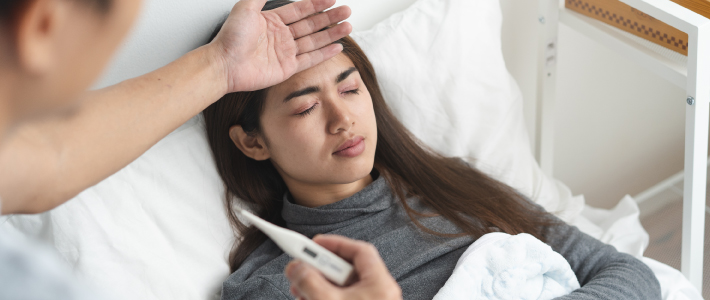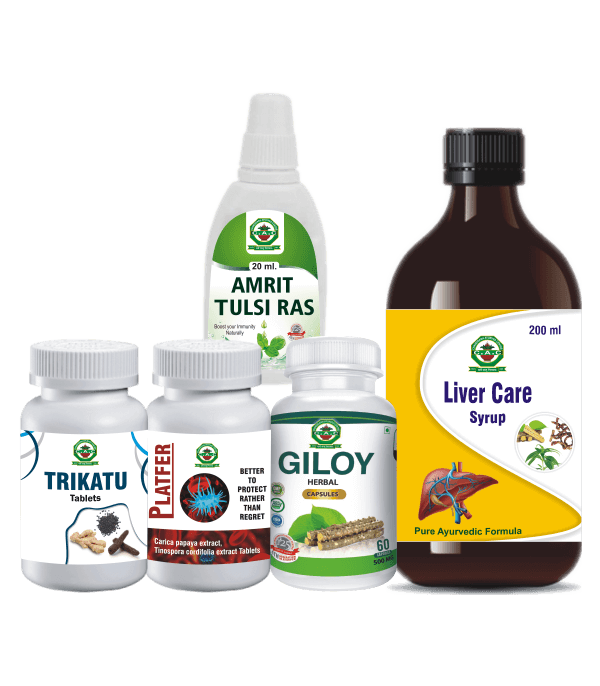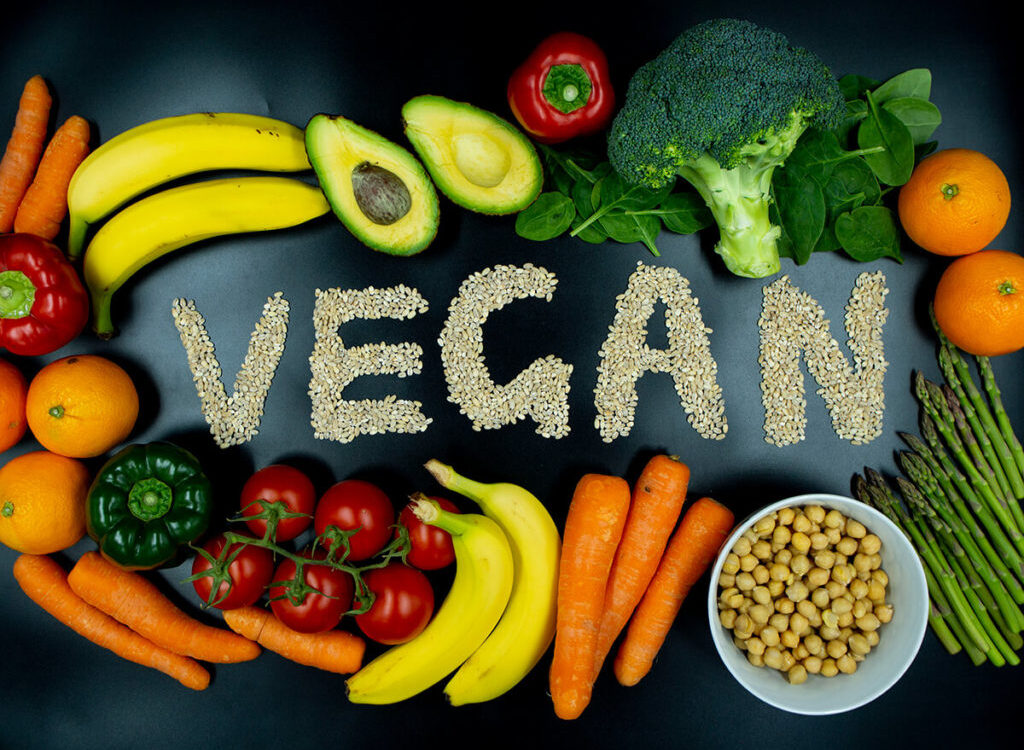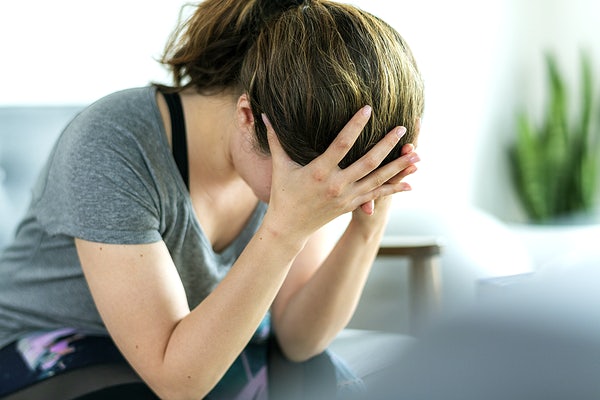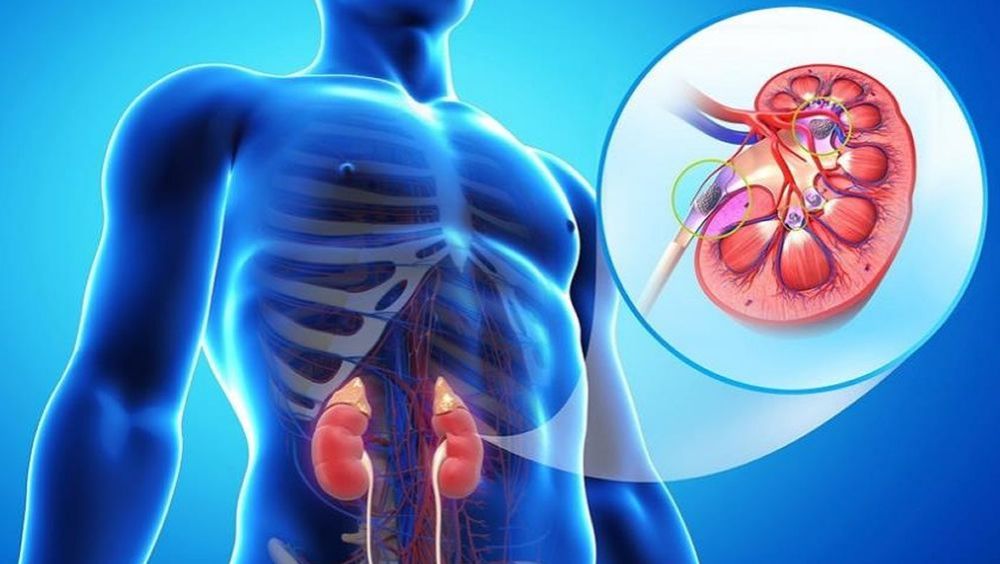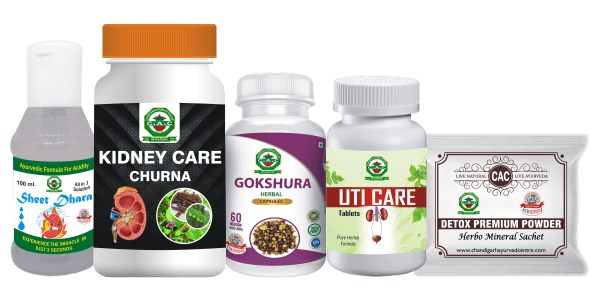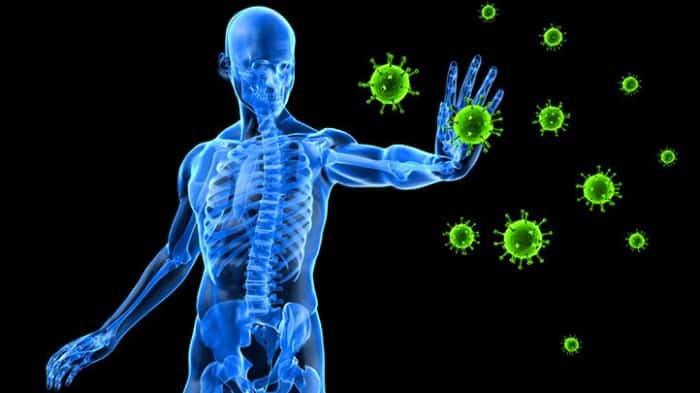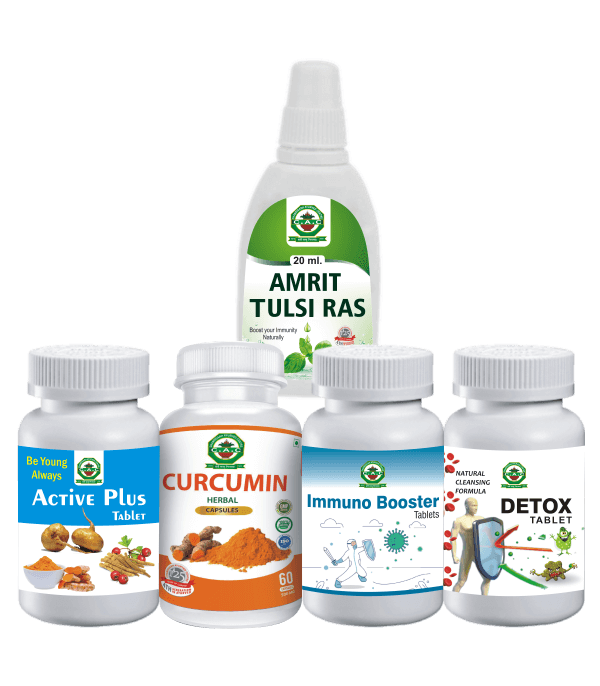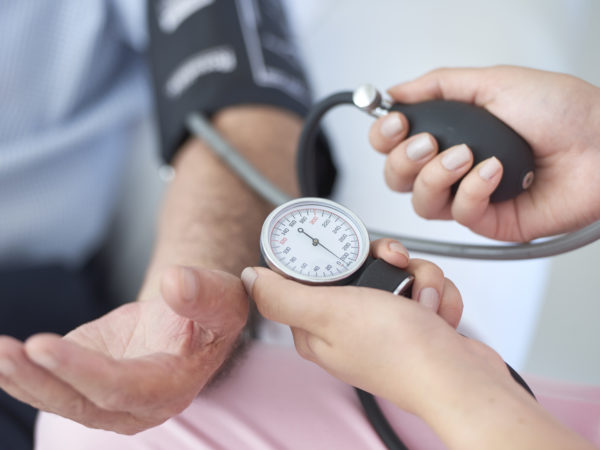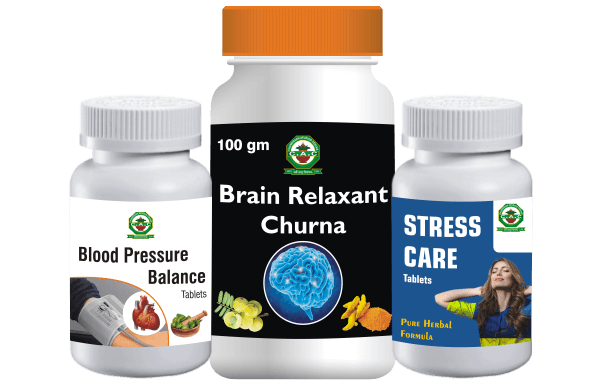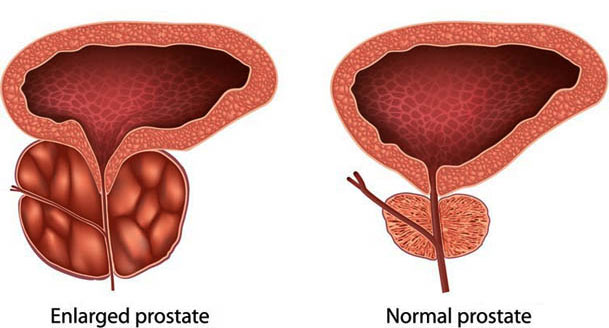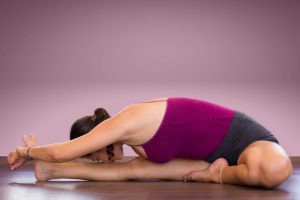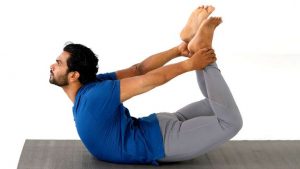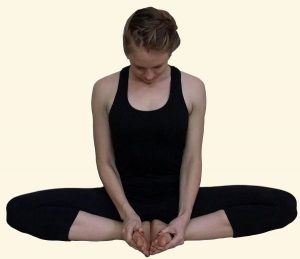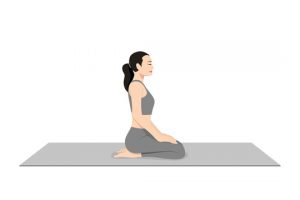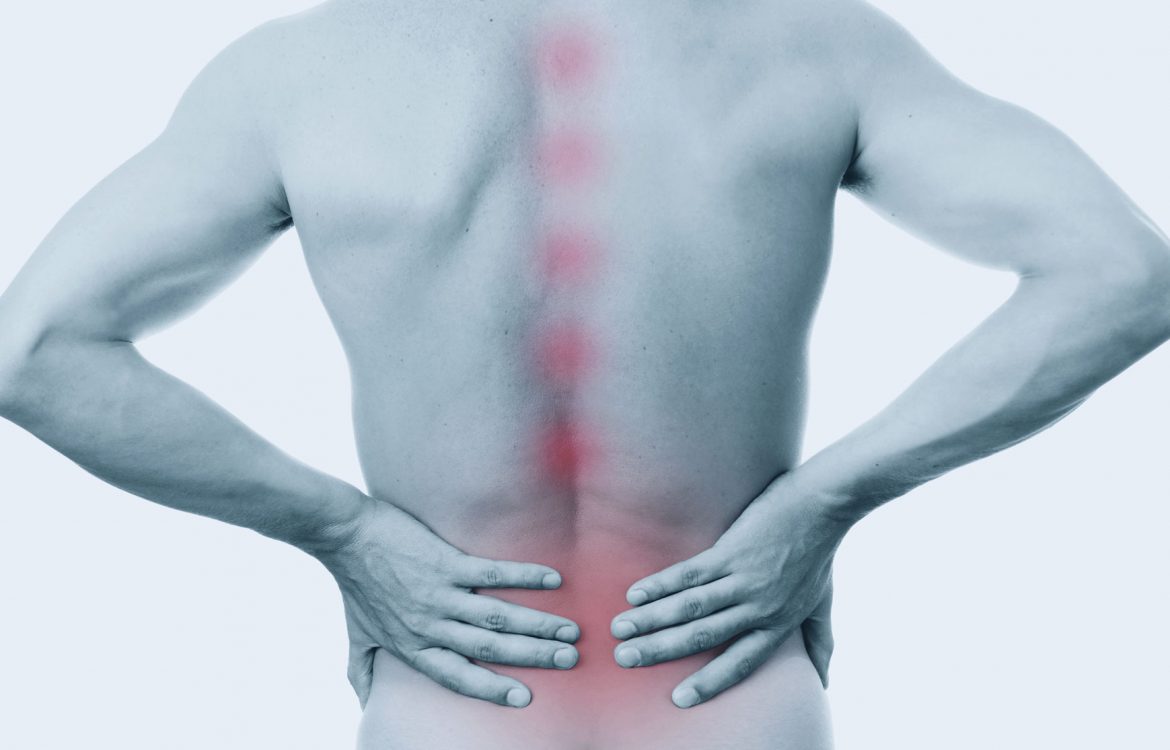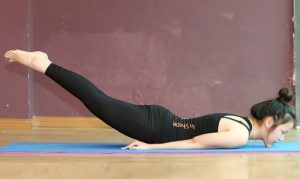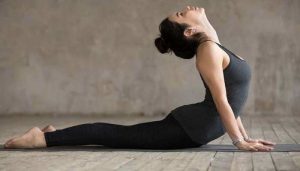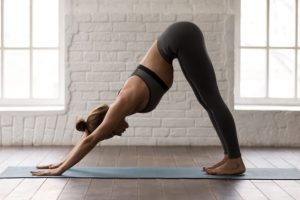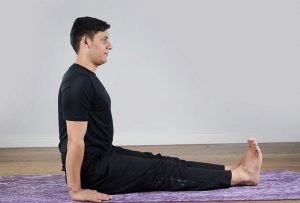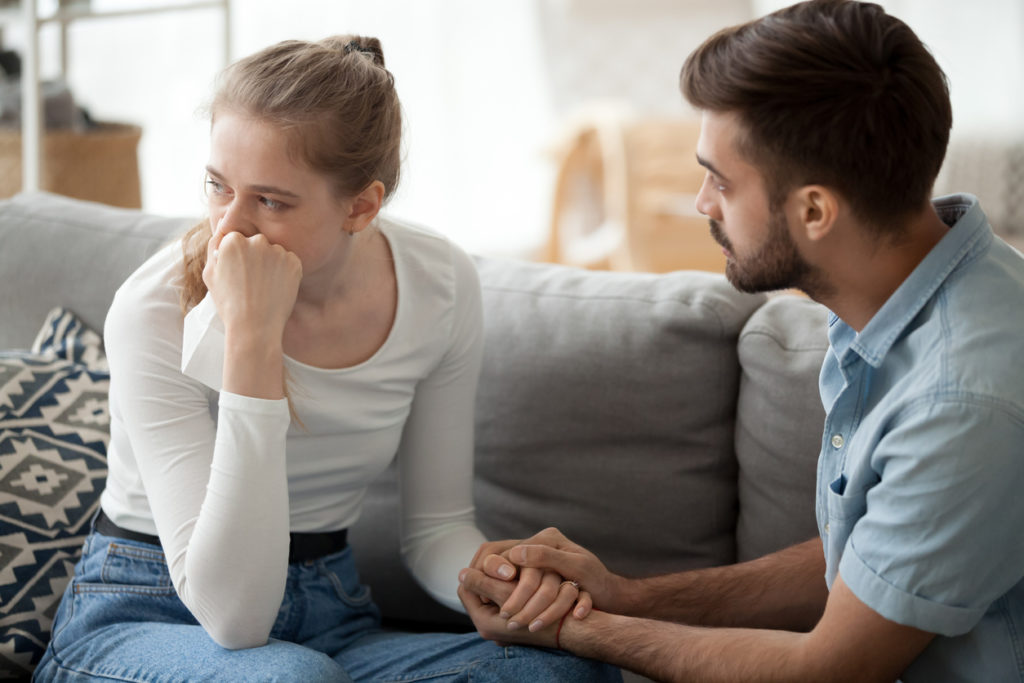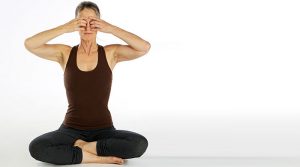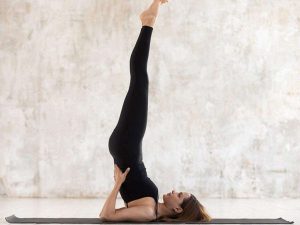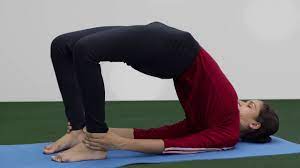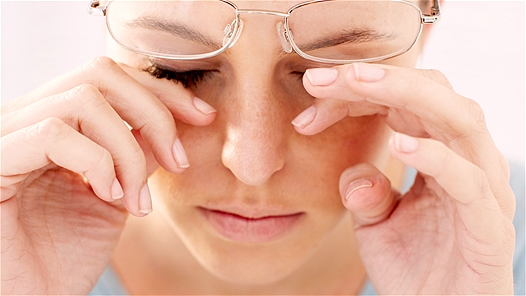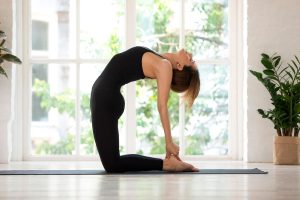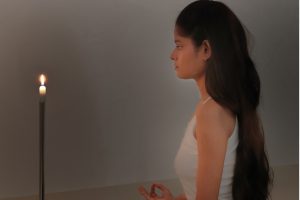Author Archives: Dr. Vaidya Karanvir Singh
FEVER & CHILLS
- February 1, 2023
- Posted by Dr. Vaidya Karanvir Singh
- 0 Comment(s)
Fever is defined as elevated body temperature in response to disease or illness. It is also called pyrexia, febrile , hyperthermia.
CAUSES OF FEVER :-
- viral and bacterial infections such as respiratory tract infections, skin infections, urinary tract infections , malaria
- Inflammatory condition such as rheumatoid arthritis , lupus.
- Cancerous tumor
- Immunization such as diphtheria, tetanus, COVID vaccine.
- Surgical trauma or crush injuries
- Extreme sun burn .
SYMPTOMS OF FEVER :
- Chills
- Sweating
- Sensitivity to light .
- Pain in joints
- Weakness
- Decreased appetite
- Yawning
- Headache
- Excessive thirst
- Dizziness
- Sleepiness
- Tachycardia
- Hot skin
- Eye pain or watering from eyes.
- With high temperature confusion , convulsion, hallucination .
- Inability to concentrate .
TYPES OF FEVER :
- INTERMITTENT FEVER: In this condition temperature is elevated but falls to normal each day.
- REMITTENT FEVER : fever nay come and go and the temperature fluctuates but never back to normal .
- CONTINUOUS FEVER : it is condition in which the body temperature remain above normal level throughout the day but does not fluctuate more than 1 degree.
- SUDDEN HIGH FEVER : sudden increase in the body temperature . It can cause tiredness , fatigue , bodyache, headache
- RHEUMATIC FEVER : It is the inflammatory disease that can develop when strep throat or scarlet fever is not properly treated .
Based on duration :
1 ACUTE: Less than 7 days
2. SUBACUTE: upto 14 days
3. CHRONIC : more than 14 days .
Based on elevation of temperature :
- Mild/ low grade fever : temperature varies from 100- 102 degree Fahrenheit.
- Moderate grade fever : temperature varies from 102 -104 degree Fahrenheit.
- High grade fever : temperature varies from 104- 106 degree Fahrenheit
- Hyperpyrexia : more than 106 degree Fahrenheit .
FACTORS AFFECTING BODY TEMPERATURE :
- Age
- Exercise
- Hormonal level
- Stress
- Circadian rhythm
WARNING SIGNS OF FEVER :
- Temperature more than 103 degree fahrenheit .
- Shortness of breathe .
- Headache .
- Fever not subside in 48 hours.
INVESTIGATION:
- CBC
- Widal test
- Chest x-ray .
- Urine analysis and Urine culture .
AYURVEDIC APPROACH OF FEVER :
In Ayurveda fever is compared with jwara . the site of origin of fever is stomach and it affects the agni which leads to production of ama and vitiated dosha . the channels that carry ama to the site of disease is rasa dhatu. Fever can be classified as vataja ,pittaja , kaphaja , agantuja , krodhaj ,kamaja, shokaja .
PANCHKARMA PROCEDURES FOR FEVER:
- Vamana
- Virechana
- Nasya
- Basti
GOOD HERBS IN FEVER :
- Giloy
- Tulsi
- Amalaki
- Vasa
- Adraka
- Bhumiamalaki
- Pippali
- Mustaka
DIETARY AND LIFESTYLE CHANGES :
DO’s
- Add Old rice, barley, Porridge in diet
- Fruits and vegetables like shigru, paravala , pomegranate etc.
- Light meals.
- Massage and rest cam help in improving the condition.
- Staying in well ventilated room
DONT’S
- Do not include junk foods in diet .
- Do not drink contaminated water
- Do not suppress natural urges.
- Avoid bathing and sleeping in day time
- Proper gap between meals and avoid overeating.
- The foods which are heavy , unctuous, sweet and astringent are avoided .
- Exposure to cpld environment .
CHANDIGARH AYURVED CENTRE MEDICATION FOR THE TREATMENT OF FEVER:
1. Giloy Capsules
These herbal capsules are prepared from the extract of herb Giloy (Tinospora cordifolia) that improves the immunity & prevent infections in the body. The antipyretic property of this herb reduces fever naturally. Giloy capsule shows antioxidant, analgesic, anti-inflammatory, rejuvenating, immunomodulator, etc properties that relieve dengue fever signs and symptoms. These herbal tablets reduce Kapha dosha, detoxifies pitta dosha, & pacifies Vata dosha. This vati prevents all types of fever, deal with recurrent infection, cold, weakness, etc.
Recommended Dosage: Take 1 capsule twice daily with normal water.
2. Amrit Tulsi Ras
CAC Amrit tulsi ras is Holy basil (Ocimum sanctum) or tulsi is a powerful herb that has been used in Ayurveda and other traditional medical treatments in India for thousands of years. The small holy basil shrub with tiny flowers is considered a sacred plant in India. It was believed that the holy basil leaves had potent powers to flush out toxins from the body. People have tulsi water (water which has tulsi leaves soaked overnight) or chew on a tulsi leaf to improve overall health. Several health products are available with tulsi extracts to help treat cold, cough, and the flu.
Recommended Dosage: Take 2-3 drops twice daily with normal water.
3. Immuno Booster Tablet
It is a pure herbal combination that helps to build up immunity. it consists of effective levels of antioxidants. vitamin C and E circulate in the body to protect it against the damage caused by free radicals. it has natural immunity-boosting properties to prevent and ease cough, cold, headache, and infections. it provides quick relief from early signs of running nose, itching throat, body ache, and weakness. It consists of Giloy, Ashwagandha, Bala – 100 mg, Mulethi, Kali mirch, Lavang, Harar, Tulsi, etc
Recommended Dosage: Take 1 tablet twice daily with normal water.
4. Detox Premium Powder
CAC DETOX PREMIUM POWDER is herbs-mineral sachets which are purely Ayurvedic formulation. These sachets mainly detox the body and eliminate toxic substances and help in proper metabolism of all the functions. This formulation acts at the level of the nervous system and facilitate proper conduction of signal impulse from the nerves to the muscles. These sachets have anti-inflammatory, antioxidant, and anti-bacterial, anti-fungal, and immune-modulator. The ingredients present in it are moti pishti, parwal pishti, shukta pishti, Giloy satv, kamdudha ras, Jahar Mohra, akik pishti, gandhak rasayan, sutshekhar ras, etc. These ingredients balance all the three doshas (Vata, Pitta & Kapha) and help in blood purification, reduces burning sensation, weakness, and hot flashes in patients. It reduces the level of high uric acid in the body. The powder is very beneficial in relieving discomfort, numbness, muscle ache, and reduces swelling of the pelvic region.
Recommended Dosage: Take 1 sachet twice daily with normal water.
5. Liver care tablet
CAC Liver Care Tablet is a herbo-mineral tablet of size 650 MG and is a purely ayurvedic formulation. CAC Liver Care tablets help in balancing Pitta dosha. These tablets stimulate the growth of new liver cells, promote functions of liver, and improve blood flow from the liver. It helps in the treatment of fatty liver, Liver cirrhosis, Hepatitis, Typhoid, hepatomegaly, and obstructive Jaundice. CAC Liver Care Tablets contains Ingredients like Kalmegh (Andrographis paniculata), Kutaki(Picrorhiza kurroa), Bhumi amla( phyllanthus niruri), Giloy(Tinopora Cordifolia), Yavakshar( Hordeum vulgare), Imli Kshar( Tamarindus indica), Mukta Shukta pisti etc.
Recommended Dosage: Take 1 tablet twice daily with normal water.
6. Platfer Tablet:
Platfer Tablet Boosts platelet count and reverse the thrombocytopenia (low platelet count) associated with dengue. It decreases the peripheral platelet destruction and strengthens the host immune system. Platfer tablets also helps reduce fever (antipyretic property) and protect the liver (hepatoprotective property). This herbal combination is prepared from herbs like Papaya (Carica papaya) and Giloy (Tinospora cordifolia) which increases the platelet counts naturally. It provides good and effective results for patients. It increases the physical and mental strength of a person and builds up immunity.
Recommended Dosage : Take 1 tablet twice a day with normal water.
BENEFITS OF VEGAN DIET
- February 1, 2023
- Posted by Dr. Vaidya Karanvir Singh
- 0 Comment(s)
WHAT IS VEGAN DIET:
Vegan diet is a plant based diet that exclude animal products . Vegans do not eat this type of food that comes from animals including dairy products and eggs. Four types of vegans are Religious vegans, health vegans ,environmental vegans ,ethical vegans .
HEALTHY EATING AS A VEGAN:
- Eat five types of fruits and vegetables daily .
- Starchy carbohydrates include potatoes , bread, rice etc.
- Fortified dairy items such as soya drinks and yoghurts.
- For maintaining proteins eat pulses and beans.
- Eat nuts and seeds daily that is rich in omega 3 fatty acids .
- Drink plenty of fluids.
TYPES OF VEGAN DIET :
1. RAW FOOD VEGAN DIET : It is defined as unprocessed plant based foods that are completely raw or heated at very low temperature under 48 degree Celcius . it consist of fruits , vegetables , nuts, seeds, sprouted grains and legumes.
- WHOLE FOOD VEGAN DIET : It is defined as the diet contains whole plant foods , including fruits , vegetables , grains, legumes, nuts, seeds.
- 80/10/10 DIET : This diet comprises with 80 percent of calories comes from carbohydrates , 10 percent from protein and 10 percent from fat.
- HIGH CARB OR LOW FAT DIET: Eat carbohydrates in the form of fruit , grains, and consume low fats such as nuts, avocados etc.
BENEFITS OF VEGAN DIET:
1. IMPROVE CARDIAC HEALTH
High intake of plant based foods and exclude the animal diet are associated with a lower risk of heart disease .
- REDUCE CANCER RISK :
Plant based diet are rich in natural fiber . the nutrient found in plant based diet are vitamins, minerals, phytochemicals, fiber have been reduce the risk of several cancer.
- IMPROVE DIGESTION:-
Eat plant foods will increase the intake of dietary fibre . it supports to healthy function of digestive tract.
- ENHANCE WEIGHT LOSS :
Plant based foods are high in nutrients but low in calories.
5. BETTER MENTAL HEALTH:
Vegan diet are rich in antioxidants and other beneficial nutrients are to be protected against depression and its symptoms.
- LESS PAINFUL PERIODS:
Inflammatory food include meat , salt ,sugar can worse the pain and eating vegan diet reduce the inflammation .
- REDUCE RISK OF FOOD POISONING:
Plant based diet reduce the risk of food poisoning because it can easily digest.
- IMPROVE SLEEPING PATTERN :
Vitamin B12 is found in green vegetables . it helps in regulating sleep cycles because it stimulates the serotonin .
- REDUCE RISK OF TYPE 2 DIABETES MELLITUS :
Plant based foods promote weight loss ,especially visceral fat , which improves insulin sensitivity .
VEGAN FOOD LIST :
FRUITS : berries, citrus fruits, melons ,pears, kiwis.
VEGETABLES: Dark leafy vegetables , tomatoes, sweet potatoes , peas , mushroom
PROTEINS: Beans, Tofu Lentils.
WHOLE GRAINS : Oats, brown rice, sorghum.
NUTS AND SEEDS :Almonds, walnuts, flax seeds
HEALTHY FATS : Olive oil, Avocados .
HERBS AND SPICES: Garlic , Turmeric , mint ,cinnamon, cumin
FOODS TO AVOID IN VEGAN DIET:
- All meat and poultary
- Seafood.
- Milk
- Cheese
- Fish
- Honey
- Butter
- Yoghurt .
HOW TO REDUCE LEVELS OF CORTISOL
- February 1, 2023
- Posted by Dr. Vaidya Karanvir Singh
- 0 Comment(s)
Cortisol is a gluco-corticoid hormone synthesized and released by Adrenal glands. Gluco-corticoids are steroid type hormones that affects many aspects of the body but mainly regulates response of the body to stress.
Adrenal glands also called as Suprarenal glands as they are situated on top of two kidneys. They are small triangle-shaped glands and are part of endocrine system.
WHAT CORTISOL DO TO BODY ?
As almost ever tissue in body have receptors for gluco-corticoids so due to that it affects nearly every organ system in body .Cortisol effect body more correctly in following manner :
- Regulating Metabolism : Controls the use of proteins, fats and carbohydrates for energy by the body.
- Regulates Body’s Stress Response : At the time of stressful conditions body release cortisol after the release of “flight or fight” hormones like adrenaline. Additionally cortisol triggers release of glucose from liver for fast energy during stressful times.
- Suppressing inflammation : Cortisol boost immunity by limiting the inflammation in short spill. But if body have consistent high levels of cortisol body get used to having high level of cortisol in blood, and can lead to inflammation thus weakens the immune system.
- Regulation and Increase of Blood Sugar : If present in normal level it counter balances insulin effect to regulate blood sugar . Chronically high cortisol levels may lead to constant high blood sugar that can leads to development of Type-2 Diabetes.
- Regulates Blood Pressure: High level of cortisol leads to high blood pressure and less than normal levels of cortisol can develop low blood pressure in individual.
- Controls sleep-wake cycle: Normally body have low cortisol levels as you go to sleep and it peak at morning times before you wake. Cortisol plays significant role in initiation of wakefulness.
WHAT ARE THE CAUSES FOR HIGH LEVELS OF CORTISOL?
Having high level of cortisol hormone for a long period is considered as Cushing’s syndrome. Some causes for high levels of Cortisol are :
- Stress
- Hyperpituitarism
- Cancerous pituitary tumors
- Benign pituitary tumors
- Sleep Deprivation
- Adrenal Gland tumors
- Certain medications like prednisone, cortisone, dexamethasone etc.
WHAT ARE THE SYMPTOMS OF HIGH LEVELS OF CORTISOL ?
Individual with High Levels of Cortisol may experience symptoms like :
- Weight gain mostly in abdomen and face
- Purple, wide stretch marks on abdomen
- High blood sugar that may turn into Type-2 diabetes
- Fatty deposition in between shoulder blades.
- Excessive hair growth in females
- Weakness of muscles in upper arms and thighs
- High Blood pressure
- Depression
- Osteoporosis and fractures
- Slow healing
- Irritability
LIFE STYLE CHANGES TO REDUCE HIGH LEVELS OF CORTISOL :
- Regular Exercise : Regular Physical activities for at least 20-30 minutes helps to reduce stress and also improves sleep quality that helps to lower high levels of cortisol with time.
- Quality sleep : Chronic sleep issues are associated with high levels of cortisols . Limiting screen time before bed time, taking warm water bath before bed time, intake of chamomile tea at night etc helps in getting quality sleep thus aiding in maintaining levels of cortisol.
- Practice Deep Breathing Exercises: Stimulation of parasympathetic nervous system by controlled breathing exercise helps to lower the levels of cortisol.
- Limit stress : Be aware of triggers of the stress and the patterns like thinking pattern, heart rate, breathing and other signs to help recognize stress when it begins thus helps to limit it from becoming worse.
- Nature : Spending time in nature like hiking , forest bathing etc helps to lower high levels cortisol and also lowers stress.
AYURVEDIC HERBS TO REDUCE HIGH LEVELS OF CORTISOL :
- Ashwagandha : It has chemical compound named withanolides which helps to regulate the levels of cortisol thus manages stress ,depression, anxiety and also provide sound sleep.
- Tulsi : It helps to regulate the cortisol levels and naturally balance the hormone level.
- Mulethi : It has anti-inflammatory and adaptogenic properties that helps to fight depression and anxiety .
- Brahmi : It has potent properties that helps to reduce anxiety and stress by regulating the levels of the cortisol hormone.
- Turmeric: It has anti-oxidant and adatogenic properties that helps to relieve stress, depression, anxiety etc.
PANCHAKARMA :
- Vasti
- Udwarthana
- Shiro dhara
- Nasya
What Causing Kidney Stones?
- January 31, 2023
- Posted by Dr. Vaidya Karanvir Singh
- 0 Comment(s)
The formation of hard deposits made of salt or minerals inside the kidneys is known as Kidney stones or Renal calculi. The size of stone can be as small as sand grain up to size of golf ball. Symptoms varies from person to person but even a small stone can produce extreme pain as they exit through urinary tract out of the body.
Large sized kidney stones may get trapped in ureter which may cause bleeding and retention of urine and individual may need surgery to remove the stone. With proper treatment stone usually cause no permanent damage and can be resolved effortlessly .
WHAT ARE THE TYPES OF KIDNEY STONES ?
Kidney stones have different composition and knowing about it can determine the causes and also helps to reduce the risk of formation of more kidney stones in future. The types includes :
- Calcium stones : It is the most common type formed of calcium oxalate. Oxalate is a substance produce by liver daily or is absorbed from the diet. It may also occur in calcium phosphate form which is more common in metabolic conditions like renal tubular acidosis.
- Struvite stones : They are formed in response to UTI and can grow quickly to become quite large sometimes with few symptoms only.
- Uric acid stones : Are formed in individuals losing too much fluid due to chronic diarrhea or mal-absorption and consume high-protein diet or with metabolic syndrome or diabetes. Some genetic factors also contributes in formation of uric acid stones.
- Cystine stones : Form in individuals with hereditary disorder known as Cystinuria which leads to too much excretion of specific amino acids
WHAT ARE THE RISK FACTORS FOR KIDNEY STONE DEVELOPMENT ?
Some factors tends to increase the risk of development of kidney stones in individuals .The factors includes :
- Dehydration: Living in warm, dry climates ,sweating a lot , not drinking enough water can increase the risk of kidney stones in individual.
- Obesity : Weight gain, high body mass index and large waist size can also increase risk of kidney stones.
- Family or personal history : Having family history of kidney stones in family or already have kidney stones previously can increase the chance of development of kidney stones
- Certain diets : Intake of food high in protein, sugar and sodium may increase the risk for some type of kidney stones. High salt intake can increase the amount of calcium kidneys filter thus increasing risk of kidney stones.
- Digestive system conditions : Inflammatory bowel disease, chronic diarrhea or gastric bypass surgery leads to changes in digestive process affecting absorption of water and calcium thus increasing percentage of stone forming substances in urine.
- Certain medications : Medicines like antacids, diuretics, ceftriaxone, crixivan etc or dietary supplements like vitamin C etc can increase risk of kidney stones.
- Other medical conditions: Some medical conditions like cystinuria, renal tubular acidosis, hyper-parathyroidism and reoccurring UTI can increase the risk of Kidney stones.
WHAT ARE THE SYMPTOMS OF KIDNEY STONES ?
Kidney stones may or may not produce symptoms unless it moves around within kidney or passes into ureters. Some symptoms it may produce are :
- Sharp pain in lower back or sides below ribs
- Pain radiates to lower abdomen and groin
- Blood in urine
- Unable to urinate
- Fever or chills
- Nausea or vomiting due to pain.
- Bad smelling or cloudy looking urine
- Pain while urinating.
AYURVED APPROACH :
In Ayurved it described as Mutra Ashmari. Due to intake of unwholesome food, Low water intake, improper body detoxification by panchakarmaetc cause vitiation of three doshas mainly kapha dosha . Different doshas produce different symptoms like :
- Vata dosha : Because of vata vitiation it accumulates in vasti(urinary bladder) . Due to its qualities like rukshaguna etc cause drying up of urine , pitta and shukra and converts them into crystal form.
- Kapha dosha : Due to qualities like Guru(dominant), snigdha(oily) etc thus form soft stones white in color.
- Pitta dosha : They produce highly acidic urine and form blackish stones.
HERBS:
- Shigru
- Punarnava
- Shilajit
- shunti
- Pashanabheda
- Gokshura
CHANDIGARH AYURVED CENTRE MEDICATION FOR THE TREATMENT OF KIDNEY STONES
1. Gokshuru Capsules:
Gokshuru capsules are pure ayurvedic medicine which is very effective in kidney disorders as it has anti-inflammatory properties that reduce the swelling of the abdomen. It also acts as diuretic which causes increased urine secretion from the body and removal of all the toxins. These capsules contain pure extract of Gokshura (Tribulus terrestris). It provides effective result in acute & chronic kidney disease, chronic renal failure, cystitis, and urethritis, nephropathy, and urinary tract infections.
Recommended Dosage: Take one capsule twice daily with normal water.
2. Sheet Dhara:
CAC Sheet Dhara is herbo mineral and purely ayurvedic formulation. It works on all the three doshas of body but mainly act on pitta dosha. It contains Ajwaion, Kapur (camphor) and Mint leaves that help reduce Acidity and burning sensation in chest region with its cooling effects. It relaxes your mind also maintains Blood pressure. CAC Sheet dhara help in controlling mood swings by which many women are affected nowadays. It also controls burping ,nausea and bloating.
Recommended Dosage: Take 2 tablets twice daily with normal water.
3. Kidney Care Churna:
The kidney care churna is prepared from herbs like Bhumiamla (Phyllanthus niruri), Manjistha (Rubia cordifolia), & Punarnava (Boerhavia diffusa). These herbs in combination show anti-inflammatory, diuretic, antioxidant, analgesic, etc properties. Kidney care churna keep all kidney function tests (serum creatinine, urea, sodium, potassium, chlorine, & uric acid), etc in normal range. The use of this churna reduces swelling in the body, remove kidney stones, deal with urinary tract infection, general weakness, & fatigue, etc related to kidney patients.
Recommended Dosage: Take 1 teaspoonful twice daily with normal water.
4. UTI Care Tablet:
UTI Care Tablets helps to treat Urinary tract infections along with the diseases related to kidney, ureters, urinary bladder, and urethra. This tablet contains pure herbal ingredients which are Yavakshar (Hordeum vulgare), kalmi Shora (Pottasium nitrate), Naushadar (Ammonium chloride), Swarna Gairik (Red ochre), etc. UTI Care Tablets are also beneficial in kidney stones, chronic kidney disease, renal colic, burning sensation or pain during micturition, and Hypertension.
Recommended Dosage: Take 1 tablet twice a day with normal water.
5. Detox Premium Powder:
The powder contains all the Ayurvedic herbs which strengthen the immune system of the body and prevents the various complications by potentiating immune system. The powder includes :
Parwal Pishti– Parwal pishti is prepared from Coral calcium. It is mainly used in Pitta related disorders and helpful in bleeding disorders. This pishti relieves Ama dosha and improves the digestion power. It also improves the strength and immunity.
Shukta Pishti– It is prepared from Pearl oyster shell. Shukta pishti pacifies Pitta and Kapha dosha. It is the best ant-acid and relieves the abdominal distention. Shukta pishti reduces the rashes on the arms and legs.
Giloy Satva–Giloy satva includes water-soluble extract of Giloy/Guduchi (Tinospora Cordifolia). It balances the aggravated pitta and acts as a mild-antipyretic, antacid, and immuno-modulator. It also reduces burning sensation in the hands, feet, and body.
Kamdudha Ras–According to Ayurveda principles, Kamdudha Ras has Sheeta Virya thus it is beneficial in every Pitta Roga classified in Ayurveda. It is beneficial in the symptoms like burning sensation, restlessness, bleeding tendencies, excessive thirst, and hot flashes, vomiting with yellowish or sour water.
Akik Pishti– Akik bhasma contains Silicon Dioxide and some herbal extracts derived into in during processing with Aloe vera and Rose water. It is used in General debility, Restlessness. It works well in loss of appetite, weight loss, and feeling of excessive heat in the body.
Gandhak Rasayan– Gandhak Rasayan is a great antibacterial, antiviral ayurvedic medicine. It acts as an anti-pyretic, analgesic, & blood purifier.
Sutshekhar Ras–It is an important medicine used in Ayurveda, which acts on Pitta dosha and reduces the symptoms like nausea, vomiting, fever, headache, sour taste of mouth, restlessness, etc.
Recommended Dosage– Take 1 sachet twice a day with normal water.
HOW TO STRENGTHEN YOUR IMMUNE SYSTEM
- January 31, 2023
- Posted by Dr. Vaidya Karanvir Singh
- 0 Comment(s)
IMMUNE SYSTEM:
It is a network of biological processes that protects an organism from diseases. Immune system is made up of different organs , cells, and protein that work together.
TWO TYPES OF IMMUNE SYSTEM ARE:
- INNATE IMMUNE SYSTEM : It is present at the time of birth. It is the first to respond when it find an bacteria, virus etc. it is inherited.
- ADAPTIVE IMMUNE SYSTEM : It develops when body exposed to microbes or chemicals make a special protein to protect body from a specific invader. Antibodies are developed by cells called B lymphocytes. T cells are immune cells with different responsibilities interact with B cells as part of antibody production process and activate cytotoxic T cells to target identified pathogen . B cells that can circulate throughout the body interact with antigen , activator helper t cells ,transform into b cells and produce antibodies .After the first exposure immune system recognize the outsider organism and defend against it .
FUNCTION OF IMMUNE SYSTEM :
- The function of immune system is to prevent the infection from body .
- To find and neutralize harmful substances from the environment .
PARTS OF IMMUNE SYSTEM:
- White blood cells : These cells are a part of the body’s immune system. It protects your body from infection. WBC circulate in bloodstream and tissues to respond to injury or illness by attacking an foreign particles . it is also called leukocytes.
- Tonsils and adenoids: tonsils are small, round pieces of tissue located in the back of mouth on both sides of throat . adenoid is a clump of tissue located behind the nasal cavity above the roof of mouth. Tonsil and adenoids have antibodies to fight with infection and can become enlarged when they infected.
- Thymus: It is a small organ lie in upper chest below breast bone . it directs the development and selection of T cells which direct adaptive immunity .it is made up of immature T cells called thymocytes as well as lining cells called epithelial cells
- Bone marrow : the soft spongy tissue that has many blood vessels and it is found in the centre of bones. Stem cells in the spongy center of brain develops into RBC , Plasma cells and variety of WBC and immune cells . it makes million of new blood cells .
- Skin , mucous membrane : Skin is the first line of defense to preventing and destroying germs before they enter the body . Mucous membrane line the respiratory respiratory, digestive , urinary , and reproductive tracts. It secretes mucus which lubricate and moisten surfaces. Tiny hairs in nose catch germs.
- Lymph nodes. A small bean shaped structure that is found in the body immune system . they are the filter substances that travel through the lymphatic fluid. Swollen , tender lymph nodes usually occur as a result ofinfection from bacteria
- Spleen : It is a part of lymphatic system .The spleen makes lymphocytes, filter the blood and destroys old blood cells .
DISORDERS THAT AFFECT THE IMMUNE SYSTEM ARE :
- Allergies.
- Autoimmune diseases such as rheumatoid arthritis, Diabetes, Systemic lupus Erythematous ,Multiple sclerosis.
- Infections such as HIV .
- Cancer like Leukaemia , Lymphoma, adenoma .
- Medicines such as corticosteroids weaken the immune sytem .
TIPS TO MAINTAIN IMMUNE SYSTEM HEALTHY :
- Exercise regularly .
- Quit smoking.
- Sound sleep.
- Stress less and focus on mind .
- Take balanced diet.
- Plenty of fluids.
- Quit smoking.
- Yoga and pranayama.
AYURVEDIC APPROACH OF IMMUNE SYSTEM:
According to Ayurveda it is correlated with Vyadhi kshmatva and ojas. Vyadhi kshmatva means self avoidance of diseases .Factors that build immunity are prakriti , health of ojas , digestive power, mansika dosha .When all the 7 layers of body working together the immune system willl be boosted.
GOOD HERBS TO BOOST IMMUNE SYSTEM:
- TULSI
- NEEM
- ASHWAGANDHA
- TRIPHALA
- GINGER
- RAISIN
- BLACK CUMIN
- BLACK PEPPER
CHANDIGARH AYURVED CENTRE MEDICATION FOR STRENGTHNING OF IMMUNITY :
1. Active plus Tablet:
Active plus Tablet is a pure herbo-mineral formulation prepared from best quality of herbs. This tablet is best for person mental and physical health, also helps to boost up the immunity. The herbal ingredients present in these tablets are used to maintain person’s health and refreshes the mind and body. These tablets improves digestion, eliminates constipation, stress, nourishes brain, acts as antioxidant, analgesic, anti-inflammatory, etc.
Recommended Dosage:- Take 1 tablet twice daily with normal water.
2. Curcumin Capsules:
CURCUMIN CAPSULE is a herbo-mineral capsule of size 500 MG which is 100% safe and is purely ayurvedic formulation. CAC Curcumin Capsules helps in pacifying all three doshas. Curcumin Capsule is beneficial for variety of skin conditions like Acne, Eczema, Psoriasis, and Dermatitis. This Capsule contains standardized extract of the herb Curcumin (Curcuma longa). Curcumin is the active ingredient in Turmeric having powerful Anti-inflammatory, Antibacterial, Antifungal, Anti-microbial and Antioxidant properties.
Recommended Dosage: -Take 1 capsule twice daily with normal water.
3. Immuno Booster Tablet:
It is a pure herbal combination that helps to build up immunity. It consists of effective levels of antioxidants. vitamin C and E circulate in the body to protect it against the damage caused by free radicals. It has natural immunity-boosting properties to prevent and ease cough, cold, headache, and infections. it provides quick relief from early signs of running nose, itching throat, body ache, and weakness.
Recommended Dosage:- Take 1 tablet twice daily with normal water.
4. Detox Tablet:
Chandigarh Ayurved Centre Detox tablets are 100% natural & safe containing 1gm herbs extract. The herbs used for formulation of these tablets show antioxidant, anti-inflammatory, anti-stress, & immuno-modulator properties.The herbs & minerals used for preparation of this churna shows antioxidant, anti-inflammatory, immuno-modulator properties. Giloy satva increases immunity: Low immunity is not just one health issue, but it can disturb your entire health. Giloy satva helps in remove stress, both physical as well as mental, and helps in improving immune system to fight against many viral disease.
5. Amrit Tulsi Ras:
Amrit tulsi ras is Holy basil (Ocimum sanctum) or tulsi is a powerful herb that has been used in Ayurveda and other traditional medical treatments in India for thousands of years. The small holy basil shrub with tiny flowers is considered a sacred plant in India. It was believed that the holy basil leaves had potent powers to flush out toxins from the body. People have tulsi water (water which has tulsi leaves soaked overnight) or chew on a tulsi leaf to improve overall health.
Recommended Dosage :- 1 DROP of CAC Amrit tulsi ras in a glass of water/tea 4-5 times a day.
What causes High Blood Pressure?
- January 31, 2023
- Posted by Dr. Vaidya Karanvir Singh
- 0 Comment(s)
OVERVIEW
High blood pressure is called hypertension in medical terminology. It is the increased pressure or force of blood against the walls of blood vessels. It has become very common now-a-days due to unhealthy lifestyle and bad eating habits. It is considered to be a silent killer as a person doesn’t have any of the symptoms till great damage is done. If not treated properly at time, it can lead to serious health implications such as stroke, heart failure, kidney failure, heart attack, etc. Due to increased pressure against the walls of the arteries, the heart has to work harder to pump blood.
Blood pressure is measured in millimeters of mercury and normal blood pressure is 120/80 mm Hg. The upper number is systolic blood pressure which tells the pressure in blood vessels during contraction of heart and the lower number is diastolic blood pressure. It represents the pressure in blood vessels during relaxation of heart.
There are various types of treatments available for managing high blood pressure. However, with healthy diet and good lifestyle, the problem of high blood pressure can be managed.
WHAT ARE THE CAUSES OF HIGH BLOOD PRESSURE?
There are combination of factors which are responsible for the development of hypertension. Following are the causes of high blood pressure:
- People above the age of 65 years
- Having a genetic predisposition to hypertension
- Being obese
- Getting angry
- Increased levels of cholesterol in blood
- Having a sedentary lifestyle
- No physical exercise
- Increased blood sugar levels
- High alcohol intake
- Having metabolic syndrome
- Intake of excessive salt
- Congenial heart defects
- Hyperthyroidism or hypothyroidism
- Obstructive sleep apnea
- Drug abuse
- Abnormal functioning of adrenal glands
- Kidney disease
- Excessive intake of alcohol
- Tumors of endocrine glands
- Pregnancy
- Excessive stress
- Cigarette smoking
WHAT ARE THE SYMPTOMS OF HIGH BLOOD PRESSURE?
As high blood pressure is a silent condition, most of the people usually don’t have any symptoms in the early stage. That is why it is also called a silent killer. The symptoms become visible after many years of damage has taken place. Following are the common signs and symptoms of high blood pressure:
- Headache
- Shortness of breath
- Flushing
- Light-headedness
- Presence of blood spots in eyes
- Flushing
- Nose bleeding
WHAT ARE THE COMPLICATIONS WHICH ARE ASSOCIATED WITH HIGH BLOOD PRESSURE?
High blood pressure has various health implications if not treated well on time:
- Stroke
- Heart failure
- Thickening or narrowing of blood vessels of eye leading to blurred vision
- Heart attack
- Aneurysm
- Damage to the kidney
- Unable to think adequately
- Loss of memory
AYURVEDIC CONCEPT OF HIGH BLOOD PRESSURE
In Ayurveda, hypertension is known as raktagata vata. It is caused by the imbalance of vata dosha which gets lodged in the rakta dhatu and cause disturbance in blood circulation. It is basically caused by the unhealthy lifestyle and bad eating habits. Excessive day to day stress is also responsible for high blood pressure. Panchkarma and certain ayurvedic herbs are found to be very beneficial for treatment of hypertension.
Panchkarma helps in removal of toxins from the body and thus gives strength to the heart. It is a personalized detox program and varies from person to person.
The various panchkarma procedures beneficial for high blood pressure are:
- Shirodhara
- Virechana
- Basti
Some of the herbs which are recommended for management of high blood pressure are:
- Garlic
- Basil
- Ajwain
- Cinnamon
- Celery
- Cardamom
- Ginger
- Brahmi
CHANDIGARH AYURVED CENTER’S MEDICATIONS FOR THE TREATMENT OF HIGH BLOOD PRESSURE
Here are some of the medications of Chandigarh ayurved center which are used for the treatment of hypertension:
1. Brain Relaxant Churan
Brain relaxant churna is a herbal and purely ayurvedic formulation. It is 100% natural and pure. It is prepared from herbs that show calming effect on brainand gives you relaxation. It contains various herbs like Amla, Sonth, Pippali, Marich, Haldi, Bala, Suddha Gandhak, Lauh bhasma etc. that are Stress buster and provide you relief from anxiety. Herbs present in CAC Brain relaxant churna shows antioxidant, Neuroprotective, carminative and anti inflammatory properties
Recommended Dosage:1 teaspoon twice a day with hot milk.
2. Stress care tablet
It is an amazing combination of natural herbs like Sarpgandha, Brahmi, Tagar, jatamansi. It helps to relieve stress conditions. They help to pacify the nervous system and also helps to increase the mental and physical performance. Maintain stress level,Provide strength to the nervous system, Good in neurological problems, Works in anxiety, loneliness, insomnia, sleep, Memory loss, and Palpitations. In Ayurveda when there is an imbalance of three energies i.e. vata, pitta and Kapha, it leads to disease. Vata has a sub dosha named prana doshas which regulates the sensory perception, brain, and mind. Tarpak Kapha subtype of kapha, governs cerebrospinal fluid, sadhak pitta subtype of pitta doshas governs emotions and their impact on the heart. So any vitiation of these doshas leads to stress.
Recommended Dosage:Take 1 tablet twice daily with normal water.
3. Blood Pressure Balance Tablet
Blood pressure balance kit is herbal and purely ayurvedic formulation. It basically balance all the three doshas of body and maintain blood pressure levels within normal limits. Improve the circulation of blood from heart and make the heart walls strong by providing them strength. It contains various herbs like Rudraksh , Sarpagandha, Ashwagandha, Arjuna and Brahmi that all works on the power of heart pumping the blood to various organs. It act as antioxidant, anti hypertensive, antiinflammatory and immuno modulator.
Recommended Dosage:Take 2 tablet twice daily with normal water.
BENIGN PROSTATIC HYPERPLASIA – YOGA ASANAS
- January 30, 2023
- Posted by Dr. Vaidya Karanvir Singh
- 0 Comment(s)
INTRODUCTION
Benign prostatic hyperplasia is the enlargement of prostate gland in males. It is a very common problem in older men. Prostate gland is a male accessory gland which is present below the urinary bladder surrounding urethra. It is the size of a walnut and helps in formation of semen which contains sperms. As a man gets older, the size of prostate gland increases and thus presses the urethra. This leads to blocking the flow of urine out of the urinary bladder. Difficulty in urination, dribbling of urine and urgent need to pass urine are some of the common symptoms of benign prostatic hyperplasia.
Treatment of benign prostatic hyperplasia includes some medications, minimal invasive procedures and surgery. However, yoga is found to be very beneficial for the management of benign prostatic hyperplasia.
WHAT ARE THE CAUSES OF BENIGN PROSTATIC HYPERPLASIA?
The exact reason for the occurrence of increase in size of prostate gland is not known. But it is believed to be due to the imbalance of male sex hormones such as testosterone. Prostate gland is present below the urinary bladder. A tube called urethra carries urine from the urinary bladder. It passes through the center of the prostate gland. When the prostate gland enlarges, it blocks the flow of urine, thereby causes various urinary symptoms.
RISK FACTORS RELATED TO BENIGN PROSTATIC HYPERPLASIA
Some factors increase the risk of a person developing enlarged prostate. Following are the risk factors:
- Increasing age, above 40 years
- Having a family history of benign prostatic hyperplasia such as father or brother
- Suffering from diabetes
- Heart problems
- Sedentary lifestyle
- Lack of physical exercise
WHAT ARE THE SYMPTOMS OF BENIGN PROSTATIC HYPERPLASIA?
In the early stages, the symptoms are not noticeable but they gradually appear with time. The severity of symptoms varies from person to person. Following are the common signs and symptoms of the disease:
- Urgency to urinate
- Increased frequency of urination especially at night
- Difficulty in urination
- Weak stream of urine
- Dribbling of urine
- Inability to empty the urinary bladder
- Presence of blood in urine
- Urinary tract infection
- Narrowing of urethra – urethral stricture
- Inflammation of the prostate gland called prostatitis
- Presence of kidney stones
- Change in color of urine
- Foul odor in urine
- Problem in nerves which control urinary bladder
- Cancer of the prostate gland
- Cancer of urinary bladder
YOGA FOR BENIGN PROSTATIC HYPERPLASIA
Yoga is an ancient yogic practice which relaxes both mind and body. There are various types of yoga asanas which are very helpful in stretching and increasing flexibility of different body parts. It helps in increasing blood flow to the body organs and thus helps in keeping body healthy. It calms mind and relaxes nerves. Yoga can be very beneficial in prevention and managing the problem of benign prostatic hyperplasia.
Here are few yogic asanas which are effective in benign prostatic hyperplasia:
1. JANUSHIRSHASANA
Janu means knee and shirsha means head. Janushirshasana means head touching knee posture. The asana shouldbe performed empty stomach.
How to do it:
- Sit with legs stretched out in front, keep the spine erect.
- Bend the left knee and place the left foot against the right thigh, the left knee is on the floor.
- Raise both the arms up while breathing in and bend forwards from the hip joint while breathing out. Keep the spine straight during bending.
- Hold on to the big toes for as much time as a person feels comfortable. Keep breathing.
- Then, come up while breathing in and out. Bring the arms down to the sides.
- Then repeat the same procedure on the other side also.
Contraindications:
- Back pain
- Hernia
- Any recent abdominal surgery
- Neck injury
2. DHANURASANA
Dhanu means bow and asana means body posture. In dhanurasana, the shape of the body is made like that of a bow. The pose should be performed 4-5 hour after meals. The best time is of early morning.
How to do it:
- Lie in the stomach with the feet apart.
- Then fold the knees and take your hands backwards and hold the ankles.
- Breathe in and lift the chest up from the ground. Pull the legs upwards and more towards the back.
- Keep the body posture stable and see forward. Pay attention to the breath.
- Maintain posture for 15-20 seconds and bring the legs and chest gently to the ground.
Contraindications:
- Neck injury
- Hernia
- Hypertension or hypotension
- Lower back pain
- Migraine
- Recent abdominal surgery
3. BADHKONASANA
It is also known as Bhadrasana. Badh means restrained, kona means angle and asana means posture. How to do it:
- Sit with spine erect and legs spread straight out.
- Bend the knees and bring the feet towards the pelvis. The soles of the feet should be touching each other.
- Grab the feet tightly with the hands and make the heels as close to genitals as possible.
- Then, press the knees and thighs downwards towards the floor. Now flap both the legs up and down like the wings of a butterfly. One should start slow and then increase the speed gradually. Breathe normally.
- Fly as high as possible and as fast as a person can. Then slow down and stop.
- While breathing out, gently release the posture and straighten the legs in front and relax.
Contraindications:
- Knee injury
- Injury of the groin
- Lower back problem
4. VAJRASANA
Vajra means diamond or thunderbolt and asana means body posture. So vajrasana is thunderbolt pose. It is also known as adamantine pose.
How to do it:
- Sit with the legs stretched straight in front.
- Fold both the legs and sit in a kneeling position. Hips are placed on the heels and toes are pointed behind. Big toes should touch each other.
- Head, neck and spine should be kept in straight line. Place the palms on thighs and face upwards.
- Now exhale and inhale. Beginners can hold the pose for 30 sec whereas experts can hold for a few minutes. After that, straighten your legs.
Contraindications:
- Slipped disc
- Trouble in foot, ankle and knees
ANKYLOSING SPONDYLITIS – YOGA ASANAS
- January 30, 2023
- Posted by Dr. Vaidya Karanvir Singh
- 0 Comment(s)
Yoga uses mild stretching exercises that helps to relieve pain and also tends to increase the flexibility of the spine. Yoga asanas provides stability to the core for providing better support to spine.
Yoga also relieves the mental and body fatigue thus helps in relaxation thus reduce stress and anxiety. Poses also helps the individual to cope up with the emotional issues he may experience dealing with chronic illness.
WHAT IS ANKYLOSING SPONDYLITIS ?
It is a type of Arthritis which causes chronic inflammation of the spine. There is inflammation of Sacro-iliac joints that are located between base of spine and pelvis. The inflammation is called as Sacroilitis which is first sign of Anklyosing spondylitis. The inflammation tends to spread to joints between vertebrae and this condition is termed as spondylitis.
Some individuals experience milder symptoms that come and go on their own but some may experience severe symptoms that can persist for longer durations. Over a certain period of time new bone formations can fuse vertebrae sections together thus making the spine rigid and this is termed as Ankylosis.
WHAT ARE THE RISK FACTORS OF ANKYLOSING SPONDYLITIS ?
The exact causes of the Ankylosing spondylitis are not known but some factors can contributes to the development of the disease in individual. The factors are :
- Age : The onset is usually between 16-40 years of age and often starts in teens and young adults.
- Gender : Males are at higher risk of developing it then females. It strikes males harder and earlier while female mostly experience milder form of AS.
- Genetics : Individual with mutated gene named Human leukocyte antigen-B gene (HLA-B) are at greater risk of developing Ankylosing spondylitis.
- Some health conditions can also increase risk of AS in individuals like ;
- Ulcerative colitis
- Crohn’s disease
- Psoriasis
WHAT ARE THE SYMPTOMS OF ANKYLOSING SPONDYLITIS ?
Individual with Ankylosing Spondylitis experiences symptoms like :
- Lower back stiffness and pain
- Joint pain
- Fatigue
- Hip pain
- Loss of appetite
- Neck pain
- Abdominal pain
- Difficulty in breathing
- Skin rash
- Unexplained weight loss
- Vision problems
- Diarrhea
WHAT ARE THE COMPLICATIONS OF ANKYLOSING SPONDYLITIS ?
Ankylosing spondylitis can affect more than just spine. If not given proper treatment it can leads to development of complications like :
- Spine become more prone to fractures
- Uveitis and photophobia
- Fused vertebrae
- Heart diseases like arrhythmia, aortitis , cardio-myopathy etc
- Chest pain
- Osteoporosis
- Jaw inflammation
- Kyphosis
- Cauda equina syndrome
AYURVED APPROACH :
In Ayurved it is said to be caused by Asthimajjagata Vata. The Vitiated vata causes lowering of digestive fire in the body which leads to formation of Ama. Ama along with vitiated vata spreads to Asthivaha srotas ( bone) and Majjavaha srotos(bone marrow ) of trika sandhi causing obstruction there leading to development of symptoms of Ankylosing Spondylitis.
HERBS :
- Ginger
- Punarnava
- Garlic
- Sahijan
- Ashwagandha
YOGA ASANAS
1. SALABHASANA (LOCUST POSE) :
It helps to strengthen lower back muscles and also provide relief from back pain and stiffness. It also stimulates the abdominal organs thus aids in digestion.
STEPS:
- Lie down on your stomach with legs stretched and soles facing upward
- Place hands close to body with palms facing down
- Stretch the chin and rest it on the floor.
- Inhale deeply and slowly start raising both legs from the ground keeping them straight to a convenient possible height
- Keep breathing normally and hold the position for as long as you feel comfortable
- Release the posture slowly exhaling and return to resting position.
PRECAUTIONS :
- Injuries of knees, hip, rib cage etc
- Recant abdominal surgery
- Sciatica
- Menstrual cycle
- Peptic ulcers
- Pregnancy and post natal women
2. BHUJANGASANA (COBRA POSE):
It helps to strengthen the muscles of spine thus improves mobility of the back and also stretch chest area. It is also beneficial for abdominal organs like kidney , liver etc and stimulates the appetite.
STEPS :
- Lie down on your stomach and toes flat with sole facing upward.
- Rest your forehead on ground and keep your legs together with heels and feet touching each other .
- Extent your toes backward.
- Taking deep breath press both hands down on ground and start lifting head and chest off the ground while keeping naval on ground.
- Keep your arms straight and stretch the neck
- Hold the posture for some time and then slowly bring down head and chest to floor while exhaling.
PRECAUTIONS:
- Hernia
- Intestinal tuberculosis
- Pregnancy
- Hyperthyroidism
- Recent abdominal surgery
3. ADHO-MUKHA SVANASANA (DOWNWARD FACING DOG POSE):
It helps to stretches the back muscles thus helps to ease pain and stiffness in back. This pose also helps to strengthen the bones and also strengthen your core.
STEPS:
- Stand on your legs hip width apart
- inhaling deeply start to bend down with palms touching the ground
- Both arms should be at shoulder-width apart
- Make an inverted V shape and head should be placed between the upper arms.
- While doing it ensure soles and heels touches the floor
- Hold the pose for 5-8 breaths and then slowly return to original posture.
PRECAUTIONS :
- Carpal tunnel syndrome
- Injury to arms, shoulder or back
- Migraine
- Pregnancy
- High blood pressure
- Vertigo
4. DANDASANA (STAFF POSE):
It helps to strengthen core and stretches neck and shoulders. It also helps to improve the posture. Strengthens the back muscles and lengthens the spine.
STEPS :
- Sit down with legs stretched in front of you and hands at your sides. Feet pointed upwards.
- Stretch the spine comfortably and relax your legs while pressing the body firmly on floor.
- Take deep breaths and hold the pose for 20-30 seconds.
- Slowly relax and repeat 5-6 times.
PRECAUTIONS :
- Pregnancy
- Hamstring stiffness
- Spine injury
- Wrist injury
- Sciatica
INFERTILITY – YOGA ASANAS
- January 30, 2023
- Posted by Dr. Vaidya Karanvir Singh
- 0 Comment(s)
INFERTILITY:
It is defined as a failure to conceive within one or more years of regular unprotected course .
TYPES OF INFERTILITY:
- Primary infertility: It is defined as the couples who have never been able to conceive.
- Secondary infertility: It is defined as difficulity in conceiving after already having conceived(either carried the pregnancy to term or had a miscarriage).
CAUSES OF INFERTILITY IN MEN:
- Azoospermia .
- Sperm are immotile cannot swim.
- Testicular cancer, surgery , infection.
- Elevated temperatures may impair sperm production and function
- Ejaculation disorders.
- Oligospermia
- Varicocele in the scrotum.
- Medical condition such as diabetes , autoimmune disorder.
IN WOMEN
- Ovulation disorders such as polycystic ovary syndrome, hyper-prolactinemia, poor egg quality.
- Problem in uterus and fallopian tubes such as Endometriosis .
- Medication such as NSAID,s , Chemotherapy, Radiotherapy,birth control pills .
- Exposure to environmental toxins such as lead and pesticides.
- Thyroid disease
- Sickle cell anaemia
- Hormonal imbalance.
DIAGNOSIS OF FEMALE INFERTILITY:
- Pelvic examination ( pap smear test)
- Blood test.
- Transvaginal ultrasound .
- Saline sonohysterogram.
DIAGNOSIS OF MALE INFERTILITY :
- Semen analysis
- Blood test
- Scrotal ultrasound .
RISK FACTORS FOR INFERTILITY:
- Age (more than 35 years in women and more than 40 years in
- More intake of alcohol.
- Exposure to environmental toxins such as pesticides , lead etc.
- Radiation therapy.
- Sexually transmitted disease.
- Smoking
- Obesity or underweight .
PREVENTION:
IN MEN:
- Avoid high temperature found in hot tubs and hot baths.
- Avoid exposure to industrial and environmental toxins.
- Daily exercise .
- Limit medication that affects infertility.
- Stop drug or alcohol use .
- Avoid excessive amout of alcohol intake .
IN WOMEN:
- Quit smoking.
- Avoid alcohol and street drugs .
- Limit caffeine
- Regular exercise .
According to Ayurveda infertility is compared with vandhyatwa in which there is a sukradhatu and arthav dushti is occurred .
Factors of fertility in ayurveda are:
- Ritu : phase of ovulation.
- Kshetra : healthy uterus which facilitate the entry of sperm.
- Ambu: nutrional elements and hormones.
- Bija : ovum and sperm.
TO IMPROVE INFERTILITY :
In Men :
- General hygiene
- Exercise
- High protein and vitamin diet.
- Limit the consumption of alcohol and tobacco.
- Take cold water bath instead of hot water bath.
- Not wear tight underwear , electric blanket
- Quit smoking and alcohol.
- Do meditation.
In Women :
- Take iron and folic acid if Hb is less than 11 gram.
- Do meditation
- Take nutritious diet .
GOOD HERBS FOR INFERTILITY
- Ashoka
- Ashwagandha
- Amalaki
- Punarnava
YOGA ASANAS FOR INFERTILITY:
1. BHRAMARI PRANAYAM:
MethodS:
- Sit in a crossed legged position .
- Close eyes and ear with the help of fingers.
- Index finger is placed in between the eyebrow and ring or little finger is placed on nostrils.
- Focued in between the
- Take deep breathe and hold the breathe for 2-3 seconds and slowly exhale through the nose while producing a huming sound.
- Mouth should be closed.
- Repeat 5 times.
Benefits:
- Helps in reducing blood pressure.
- Builds confidence.
- Instant relief from tension , anger, anxiety.
- Improves concentration and memory.
2. SARVANGASANA (SHOULDER STAND )
Methods:
- Firstly Lie in supine position.
- Than Raise the legs to 30 degree than 60 degree than 90 degree than 120 degree with the hands supporting the back .
- The elbow should rest on the ground and the toes joined and straight .
- Keep eyes closed .
- Starting this pose with 2 minutes.
- Bend the legs slightly backwards .
- Remove the hands from back and place them straight on ground.
- Regain the original position slowly while keeping hands on the floor.
Benefits:
- Stimulates thyroid and parathyroid glands.
- Nourishes the brain.
- Stretch the heart muscles .
- Relief from constipation, indigestion.
Contraindication:
- Diarrhea
- Headache
- High blood pressure.
- Neck injury.
- Mensturation
3. SETUBANDHASANA( BRIDGE POSE):
Methods:
- Lie on back and bend the knees .
- Bring your heels close to buttocks.
- Lift your hip upward toward the sky.
- Tuck your chin with sternum .
- Support of hand on the back.
- Relax Gluteus and Engange your inner thighs.
- Lift your hip higher.
- Slowly release.
Benefits:
- Strengthens the hamstring muscle.
- Helps in alleviate stress and mild depression.
- Improves digestion.
- Reduce stress promote calm and stimulates reproductive area.
4. BHUJANGASANA ( COBRA POSE):
Methods:
- Firstly lie in prone position
- Than Palms on the side of your chest, arms close to the body, elbows pointing outward. Inhale and raise your forehead, neck and shoulders.
- Raise your trunk with the support of arms.
- Look into the sky (upward) while breathing .
- Navel touches on the floor.
- Hold this pose for 5 seconds.
- Slowly slowly comes into prone position
- Turn your head to one side and arms on the side of body.
Benefits:
- It help in to stretch muscles of the chest, shoulders, and abdominal area.
- Help to enhance anxiety.
- Rejuvenate the heat and elevate the mood.
- It helps in decrease the stiffness of lower back .
- It helps in the production of cervical mucus that makes the journey of the sperm to egg easier.
- Bringing energy to the uterus , ovaries .
5. BADHA KONASANA: ( BUTTERFLY POSE)
Methods:
- Sit in dandasana.
- Bend your knees and join the soles of feet.
- Hold your feet and ankles.
- Move your heels to the groin.
- Breathe out and down your knees to the ground.
- Relaxed Arms and shoulder .
- Press the sitting bones within the floor and the ccrown of your head pointing towards the ceiling to elongate the spine.
- Knees moves like wings of butterfly.
- Hold this pose for upto 2 minutes.
Benefits:
- Stretches the groin and inner thighs.
- Increase the flexibility of knees, ankle, feet and hips.
- Beneficial in urinary disorders.
- Beneficial in infertility and asthma.
WEAK EYESIGHT – YOGA ASANAS
- January 30, 2023
- Posted by Dr. Vaidya Karanvir Singh
- 0 Comment(s)
Weak eyesight is a common problem occurring nearly 1 out of 5 person. If someone is suffering from blurred vision than it is associated with the condition such as myopia ,hyperopia , presbyopia and astigmatism.
TYPES OF WEAK EYESIGHT:
Most common adult vision problems are:
Blurred Vision (Refractive Errors):
MYOPIA: when a person see the near objects clearly but distance objects are blurred this is also called as nearsightedness.
HYPEROPIA: when a person see distant object clearly but near objects are blurred. This is also caleed as farsightedness.
PRESBYOPIA: more than 40 years of age ability to see the close objects like reading small print is worse .this condition is called as presbyopia.
ASTIGMATISM:it is imperfection in the curvature of cornea or lens . with this vision is blurry at all distances.
Age related macular degeneration. :
It is an eye disease that can blur your central vision . it occurs when damage to the macula that controls sharp , straight vision.
Glaucoma:
it is a condition that damage optic nerve which is caused by increased intraoccular pressure in eye .
Cataract:
Cloudy area in the lens of eye that leads to decrease in vision .
Diabetic Retinopathy:
It is a complication of diabetes that is caused by damage to the blood vessels of the light sensitive tissue at the back of retina.
Most common childhood vision problems are:
Strabismus:
It is a condition in which one eye is turned in direction that is different from the other eye. It can be of different types i.e esotropis, exotropia, hypertropia, hypotropia.
Amblyopia.:
it is a condition in which result of brain and the eyes not woking together. . the brain ignores visual information from one eye which cause problem with vision development . it is also called lazy eye.
CAUSES OF WEAK EYESIGHT:
- Improper nutrition.
- Infection : dust particles and pollutants can lead to infection and allergies.
- Unprotected screen exposure.
- Older age
- Deficiency of vitamin –A
- Diabetes mellitus.
- Age related macular degeneration.
SIGNS OF WEAK EYESIGHT:
- Blurred vision
- Double vision.
- Squinting .
PREVENTIVE MEASURES:
- Exercise daily.
- Practice yoga.
- Cover your eyes in dusty areas
- Maintain a healthy diet.
- More intake of vitamin A.
- Stop smoking.
- Wear sunglasses.
EXERCISE FOR IMPROVEMENT OF EYESIGHT :
PALMING :
Method:
- Rub your hands together to generate heat .
- Put your palms against to eyes for few seconds.
- Repeat 5-7 times.
Benefits:
It helps in to relieve eye strain and boost eyesight.
EYE ROLLING :
- Sit straight.
- Spine straight.
- Put your hands on lap.
- Rolling the eyes in clockwise direction for a few minutes.
- Take a break and roll the exercise in anti clock wise direction.
- Repeat 5 times.
REFOCUSING:
- When you are working on the laptop at that time ,you look away from the screen and focus on some object far away .
- Look at palm and then focus on distant object.
- Repeat 5 times.
BLINKING:
- Sit comfortably
- Blink for 10 times quickly.
- Close your eyes and relax for 20 seconds
- Concentrate on your breathe .
- Repeat 5-7 times.
BEST FOOD FOR EYE HEALTH
1.FISH :
Omega 3s have been found in fish and beneficial for eye and meibomian gland dysfunction.it also help in macular degeneration
2.NUTS.
3.CITRUS FRUITS.
4.GREEN LEAFY VEGETABLES.
5.SWEET POTATOES.
6.EGGS.
7.BEEF.
YOGA ASANAS FOR WEAK EYESIGHT:
BHRAMARI PRANAYAM:
Method:
- Sit in a crossed legged position .
- Close your eyes and ear with the help of fingers.
- Index finger is placed in between the eyebrow and ring or little finger is placed at the base of nostrils.
- Focus in between of eyebrows.
- Take deep breathe and hold the breathe for 2-3 seconds and slowly exhale through the nose while producing a huming sound.
- Mouth should be closed.
- Repeat 5 times.
Benefits:
- Helps in reducing blood pressure.
- Builds confidence.
- Instant relief from tension , anger, anxiety.
- Improves concentration and memory.
USHTRASANA
Method:
- Sit on the floor stretching your leg and spine erect and palms on the ground side by the buttocks.
- Bend your leg by the keens and sit on your heels placing the buttocks in between the heels, the right big toe overlapping the left toe .
- keeping your knees in line with the shoulders and sole of the feet facing downward
- Put hand on thighs.
- Inhale and arch your back and put your palms on the heels of the feet.
- Keep your arms straight.
- Do not strain your neck keep it neutral. Neck will be free.
- Stay in this final position for couple of breaths or as much you can do it with easy way .
- Breathe out and slowly come to normal position withdrawing your hands from the feet.
Benefits:
- Imroves flexibility of spine and strengthens it.
- Improves digestion
- Gives relaxation to the lower back.
- Indigestion
- Reduces abdomen fat.
- Thyroid and parathyroid.
Contraindications:
- Hernia
- Neck or shoulder injury.
- Recent abdominal surgery.
SARVANGASANA:
Methods:
- Lie down in supine position.
- Raise the legs to 30 degree than 60 degree than 90 degree than 120 degree with the hands supporting the back .
- The elbow should rest on the ground and the toes joined and straight .
- Keep eyes close .
- Starting with 2 minutes.
- Bend the legs slightly backwards .
- Remove the hands from back and place them straight on ground.
- Regain the original position slowly while keeping hands on the floor.
Benefits:
- Stimulates throid and parathyroid glands.
- Nourishes the brain.
- Strectch the heart muscles by returning more venous blood to the heart.
- Relief from constipation, indigestion.
Contraindication:
- Diarrhea
- Headache
- High blood pressure.
- Neck injury.
- Mensturation
TRATAKA
Methods :
- Sit in meditation pose in front of candle.
- Open the eyes and look at the flame without blinking. .
- Close the eyes again.
- Repeat the practice 3 times .
- The practice time should gradually build.
Benefits:
- Purifies the eyes and strengthens the eye muscle.
- Correct short-sightedness.
- Improves vision, concentration and memory.
- Cure sleep disorder such as headache, insomnia etc.


